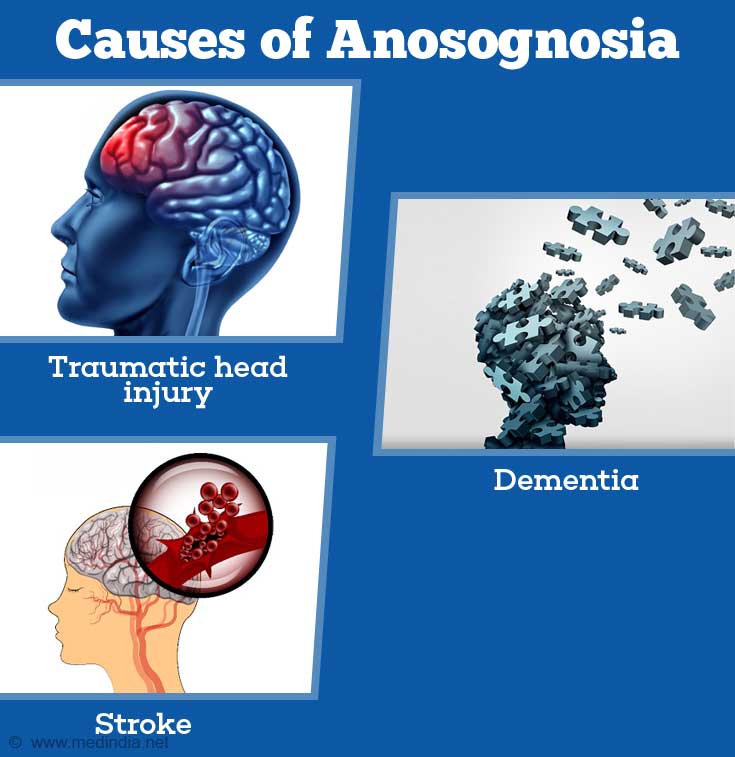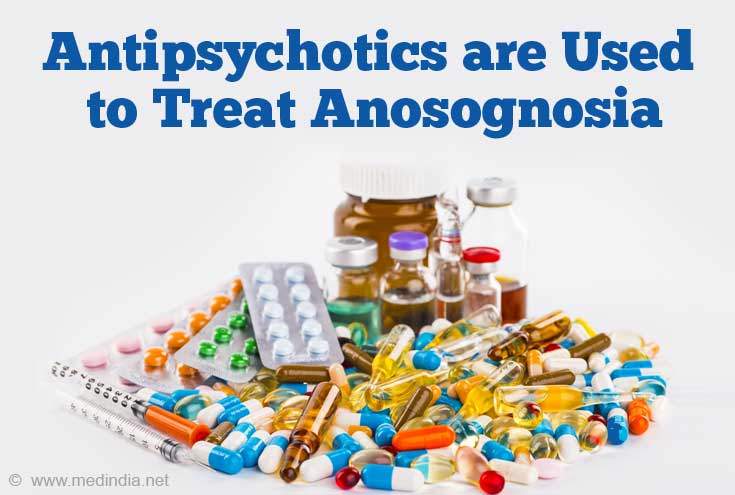- Anosognosia Keeps Patients From Realizing They’re Ill - (https://psychnews.psychiatryonline.org/doi/full/10.1176/pn.36.17.0012)
- Anosognosia: Treatment Advocacy Center - (http://www.treatmentadvocacycenter.org/key-issues/anosognosia)
- Anosognosia: GoodTherapy.org - (https://www.goodtherapy.org/blog/psychpedia/anosognosia)
- De Carolis A, Cipollini V, Corigliano V, Comparelli A, Sepe-Monti M, Orzi F, et al. Anosognosia in people with cognitive impairment: association with cognitive deficits and behavioral disturbances. Dement Geriatr Cogn Dis Extra. 2015 Feb 17; 5(1): 42-50. DOI - (10.1159/000367987. PMID: 25852731.)
- Lehrer DS, Lorenz J. Anosognosia in schizophrenia: hidden in plain sight. Innov Clin Neurosci. 2014 May-Jun; 11(5-6): 10-17. PMCID: PMC4140620. - (10.1159/000367987. PMID: 25852731.)
What is Anosognosia?
Anosognosia is a mental illness that literally means “to not know a disease”. It is the lack of insight of a patient to understand that he/she has a disease, in spite of the fact that the clinical evidence positively indicates the presence of disease and an urgent need for treatment.
Anosognosia is different from denial. In anosognosia the patient is unable to understand that they are unwell (due to damage to parts of the brain responsible for awareness of self) in contrast to denial where the person is unwilling to accept they are ill.
Anosognosia is associated with several neurological disorders that result in reduced cognitive function. These include stroke, brain tumors, dementia,Alzheimer’s disease, and Huntington’s disease.
There is accumulating evidence, which suggests that anosognosia is also prevalent in several psychiatric conditions. For example, anosognosia is the major reason why patients suffering from bipolar disorder or schizophrenia refuse to take medicines prescribed by their doctors. Research indicates that about 40% of bipolar disorder patients and 50% of schizophrenia patients suffer from anosognosia. Another condition that can be associated with anosognosia is major depression, with psychotic features.
What are the Causes of Anosognosia?
Scientific research suggests that anosognosia is a neurological condition caused by damage to the cerebral cortex of the brain in the frontal and parietal lobes of the right hemisphere. Importantly, damage to those anatomical areas of the brain involved in “self-reflection” and “introspection” can cause anosognosia. Because of this condition, the patients cannot recognize that they are ill.
Brain changes that occur in anosognosia can occur due to several causes. Some of the major causes of anosognosia include the following:
- Traumatic head injury
- Dementia
- Stroke

What are the Signs and Symptoms of Anosognosia?
Anosognosia is characterized by the following signs and symptoms, which are mainly to do with behavioral aspects:
- A severe and persistent lack of insight.
- False belief that he/she is not sick, which does not change in spite of the medical evidence of disease.
- Strong and consistent denial that he/she needs to seek medical help.
- Illogical explanations that try to counter the medical evidence.

How do you Diagnose Anosognosia?
Diagnosis of a patient with anosognosia is based upon clinical evaluation by a psychiatrist. For example, Chao and Kawasaki recommended an approach, which has the acronym “LEAP”. It involves the following approaches:
- Listening to the patient
- Empathizing with the patient
- Agreeing with the patient
- Partnering with the patient
This "LEAP" approach helps to take the patient into confidence by the doctor, so that treatment can be initiated as soon as possible.
How do you Treat Anosognosia?
There are two major strategies that can be adopted for the treatment of anosognosia. These are briefly discussed below:
Antipsychotic Therapy: If the underlying cause for anosognosia is schizophrenia, bipolar disorder, major depression or psychosis, then antipsychotic medications are likely to improve the condition. In fact, there is evidence of improvement of insight in schizophrenia patients regularly undergoing antipsychotic therapy. Antipsychotics generally fall into two categories:
- Typical Antipsychotics: Some examples include haloperidol, thioridazine, chlorpromazine, and loxapine.
- Atypical Antipsychotics: Some examples include clozapine, risperidone, quetiapine, and aripiprazole.

Motivational Enhancement Therapy (MET)
This type of therapy involves a direct, one-on-one, patient-centric approach. MET focuses on motivating the patient to change his/her outlook on the disease condition and trying to convince them that they require medical help. Patients who engage in self-destructive activities usually have no motivation to change their behavior, although they are aware that such behaviors are damaging their personal health, family life, and social interactions. An experienced therapist who is well-acquainted with the MET technique can make a huge difference to the life of a patient. This technique is very effective for encouraging the patient to view behavior in a more objective manner. Importantly, MET can actually empower a patient to begin changing his/her behavior.
The Case of Theodore Kaczynski, the Unabomber
Theodore Kaczynski, referred to as the Unabomber was charged with killing three persons and injuring 23 with his homemade bombs. During his trial he singularly failed to acknowledge his mental illness and refused to submit himself to psychiatric evaluation even though a defense of mental illness was his only hope of escaping the death sentence. His case is a classic example of anosognosia.
It is important for family and mental health professionals to understand that anosognosia in someone with severe mental illness is a real possibility and it is really important to listen and empathize with the patients, gain their trust and motivate them to comply with medications and treatment.









